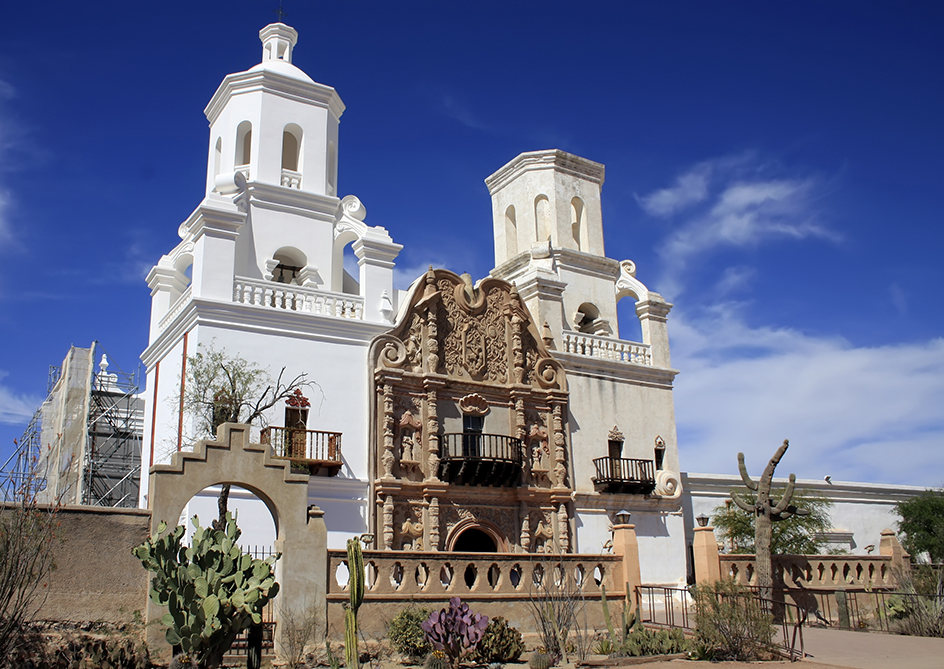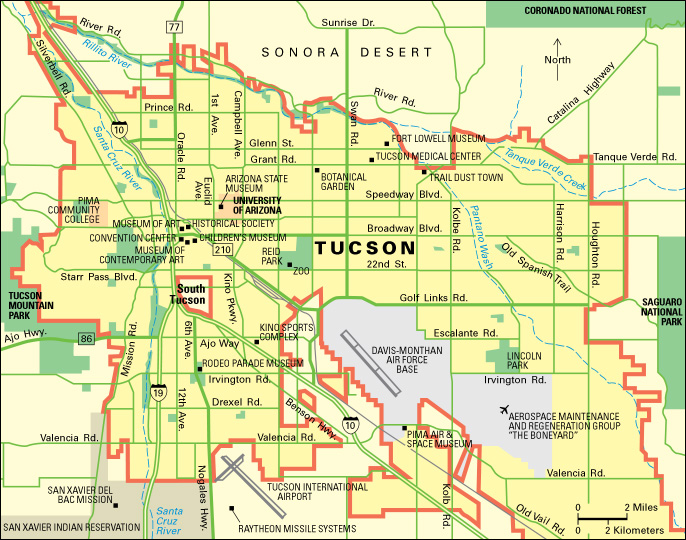Mission San Xavier del Bac, << sahn hahv YEHR dehl bahk, >> is a Christian religious center that was established by Spanish Roman Catholic priests in southern Arizona. About 1700, the Jesuit missionary and explorer Eusebio Francisco Kino laid the first foundations of the mission, near what is now Tucson. Franciscan friars directed the completion of the mission in the late 1700’s. Local Pima Indians and Tohono O’odham (also known as Papago) helped build the mission and were among its earliest members.

Beginning in the mid-1500’s, Spanish missionaries in what is now the southern United States worked to convert Indians to Christianity. Spain’s government hoped that the converted Indians would become loyal Spanish citizens and help secure Spain’s claims in North America. During the 1600’s, the Spanish began to build missions in what is now Arizona.
In 1692, Kino first visited Bac, a Tohono O’odham Indian settlement in southern Arizona. In the local Indian language, Bac means place where the water appears, after the place where the Santa Cruz River emerges after flowing underground for a number of miles. Kino began teaching the Indians of Bac about Christianity. He named the site San Xavier del Bac, after his patron saint, Saint Francis Xavier.

In 1700, Kino returned to Bac and began to lay the foundation of a church. The church was never completed, however. From its start, the mission served as both a religious center and a ranch. Jesuits completed a number of mission buildings between the 1730’s and 1750’s. Franciscan priests later took over the mission after King Charles III of Spain expelled the Jesuits from Spanish territories in 1767.
The mission’s present church, completed in 1797, is a fine example of Spanish mission architecture. The mission gained the nickname White Dove of the Desert in part because of its beautiful light-colored buildings. Today, the mission is a center for religious services for the Tohono O’odham community.
